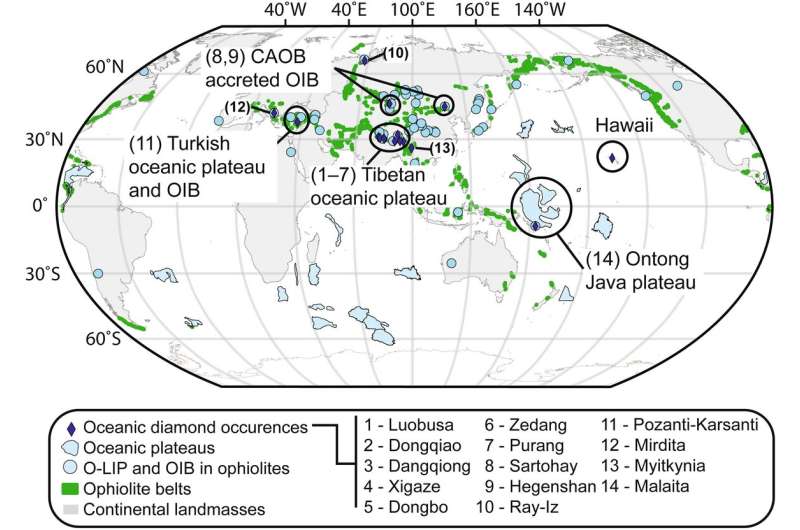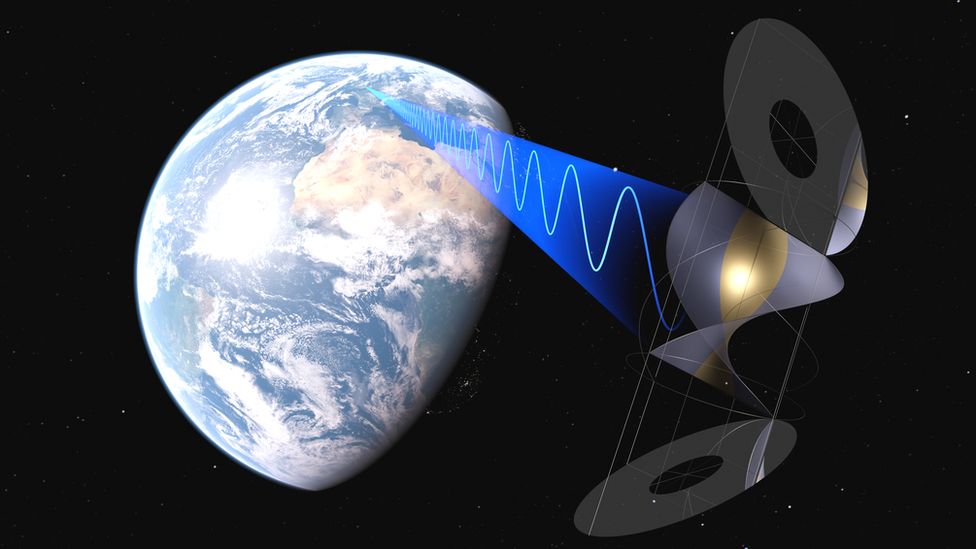
The Ruling elite want CONTROL/DOMINION/POWER and they want it NOW! I would be bad enough if they were only claiming dominion over the human race as in GLOBAL GOVERNMENT. Their avarice reaches far beyond that. Not satisfied even with the concept of ruling the hearts, minds and bodies of all the people on earth, as well as all the Resources of earth they are expanding their domain and seizing authority over the cosmos!
If you doubt it now, you will not doubt it by the end of this post. They have been pondering and tweaking the Kardashev ranking system for Civilizations for years now. It has filled their heads with all manner of fantasy about dominion. Dominion and Godhood!
Their arrogance and hutzpah has reached levels of insanity. It should be obvious to those with eyes to see that these are not humans. These maniacs are either right out descendants of the Nephilim/Fallen Angels or their are possessed by them.
I am not going to tell you about what they believe and what they are doing. I am going to let them and their publications speak for themselves.
These folks are tools of Satan. Yet, there is no doubt in my mind that God is still on the thrown and using these madmen for HIS purpose.
spacer

A TYPE ONE CIVILIZATION (a BUCK ROGERS TYPE OF SYSTEM) THIS TYPE OF CIVILIZATION HAS HARNESSED IT’S PLANETARY POWER, THEY CONTROL EARTHQUAKES, THE WEATHER, VOLCANOES. THEY HAVE CITIES ON THE OCEAN. ANYTHING PLANETARY THEY CONTROL.
That is TYPE 1.
 MACHINES. EVENTUALLY, THEY EXHAUST THE POWER OF THE STAR, AND THEY GO GALACTIC. THEY HARNESS THE POWER OF BILLIONS OF STARS IN A GALAXY..
MACHINES. EVENTUALLY, THEY EXHAUST THE POWER OF THE STAR, AND THEY GO GALACTIC. THEY HARNESS THE POWER OF BILLIONS OF STARS IN A GALAXY..A TYPE THREE CIVILIZATION (EMPIRE FROM STAR WARS) POWERED BY BILLIONS OF STARS.
According to Michio Kaku we are not even civilized. We are a type 0 civilization. We aren’t even on the scale. That is why “science” is racing so hard to make us a type 1. He admit that they cannot find ANY evidence of a Type 3 Civilization anywhere. Truth is, they can’t find a Type 2 either. HE IS FULL OF GARBAGE. These “scientists” are indeed MAD!
Let’s find out more about what all that means for us.
spacer
What If We Become a Type 1 Civilization?
spacer
Though Kardashev’s initial theory only had 3 levels, scientists have expounded on his theory both in the details of those 3 Types but by adding additional levels. So far they are up to type 7.
spacer
What if We Become a Type 7 Civilization?
spacer
I was curious as to what EXACTLY Kardashev state in his original work.
spacer
Whenever we’re audacious enough to categorize far future civilizations, we turn to the work of Nikolai Kardashev. Nick Nielsen today looks at the well known Kardashev scale in the light of a curious fact: While many use Kardashev’s rankings in their own speculations, few have gone back and dug into his original paper. In Kardashev’s terms, our planet is close to attaining Type I status, which would surprise many commentators. And doesn’t the ambiguity over what constitutes the energy of a star — red dwarf? red giant? — play havoc with cut and dried ‘type’ definitions? How subsequent writers have adapted and modified the Kardashev scale makes for a cautionary tale about mastering our sources before using them for further extrapolation. For that matter, are there better gauges of a civilization than its use of particular energy resources? Answering the question deepens the debate that Kardashev so fruitfully began.
by J. N. Nielsen
 The name of Nikolai S. Kardashev is synonymous with the Kardashev ranking of civilizations according to their energy profile, and probably will be so synonymous as long as human civilization (or some successor institution) endures.
The name of Nikolai S. Kardashev is synonymous with the Kardashev ranking of civilizations according to their energy profile, and probably will be so synonymous as long as human civilization (or some successor institution) endures.
Kardashev is a radio astronomer and among the pioneers of SETI, and his idea of classifying civilizations according to their ability to harness energy was directly related to his experience in radio telescopy (Kardashev asked himself how powerful an extraterrestrial radio signal would have to be in order to be detected, “by conventional radio astronomical techniques.” [1] The numbers he came up with were quite high, and this furnished the basis of his tripartite division of civilizations into Type I, Type II, and Type III.
If a civilization could radiate EM spectrum emissions at the energy levels of naturally-occurring astronomical radio sources, such a civilization could be detected as easily as we detect pulsars, radio galaxies, and the like. For a civilization to radiate at such levels of energy, however, would require technological capacities beyond our current abilities. Kardashev notes his Type II and Type III civilizations could radiate at such high energy levels, and although we could not match these levels, we could receive these signals. He also suggests that known astronomical radio sources could have an artificial origin. Thus from a Kardashevian perspective, the existential risk of METI is negligible, as only very advanced and powerful civilizations would be able to transmit to the universe at large, while younger, less advanced, and therefore more vulnerable civilizations are restricted to passive listening, for all practical purposes.
spacer
 |
|
Mission | METI International |
spacer
Sometimes the discussion of Kardashev civilization types seems to become a little too casual, and, like the sailors on the Pequod who each look into the gold doubloon nailed to the mast and see themselves and their personal concerns mirrored within, writers on the possibility of extraterrestrial civilizations (and especially speculation on supercivilizations) tend to read their preoccupations into Kardashev’s types without being much concerned with what Kardashev himself actually wrote about this. While many writers have parsed the Drake equation with painstaking attention to detail, I find it remarkable that no one seems to have done this for Kardashev, instead seeming to prefer impressionistic renderings of Kardashev’s civilization types.
Here is Kardashev’s original formulation of the three types of civilizations he recognized:
I – technological level close to the level presently attained on the earth, with energy consumption at ~4 x 1019 erg/sec.
II – a civilization capable of harnessing the energy radiated by its own star (for example, the stage of successful construction of a “Dyson sphere”); energy consumption at ~4 x 1033 erg/sec.
III – a civilization in possession of energy on the scale of its own galaxy, with energy consumption at ~4 x 1044 erg/sec. [1]
 Note that there is an ambiguity of the Kardashev metric in terms of actual vs. comparable energy usage. A carefully constructivist account of Kardashev would insist that a Type II civilization is “a civilization capable of harnessing the energy radiated by its own star,” and that all of this energy must in fact come from that particular star and from no other source. In other words, given a strict conception of a Type II civilization, a civilization utilizing energy quantitatively equivalent to but not identical to the actual energy produced by a single star would not constitute a Type II civilization. Actual and equivalent energy use are very different measures, and Kardashev himself uses both formulations (type II is “energy radiated by its own star” while type III is “energy on the scale of its own galaxy”).
Note that there is an ambiguity of the Kardashev metric in terms of actual vs. comparable energy usage. A carefully constructivist account of Kardashev would insist that a Type II civilization is “a civilization capable of harnessing the energy radiated by its own star,” and that all of this energy must in fact come from that particular star and from no other source. In other words, given a strict conception of a Type II civilization, a civilization utilizing energy quantitatively equivalent to but not identical to the actual energy produced by a single star would not constitute a Type II civilization. Actual and equivalent energy use are very different measures, and Kardashev himself uses both formulations (type II is “energy radiated by its own star” while type III is “energy on the scale of its own galaxy”).
Image: Russian radio astronomer and SETI theorist Nikolai Kardashev.
Moreover, in defining a type II civilization as, “harnessing the energy radiated by its own star” (a definition which is, I must observe, impredicative, because it defines an individual in terms of a whole of which it is a part) [3], Kardashev introduces an ambiguity due to the fact that there are stars of many different luminosities and temperatures. Generally speaking, the largest stars burn very hot, are very bright, and burn themselves out relatively quickly, while small stars are much dimmer and endure much longer. Brown dwarfs will likely outlast almost all other stars.
One of the persistent themes we find in commentaries on Kardashev’s civilization types is that our terrestrial civilization is not yet a type I civilization, but this isn’t at all what Kardashev said. In fact, it is the opposite of what Kardashev said, as he specified for a Type I civilization a, “technological level close to the level presently attained on the earth.” Kardashev did not say what “close” means in this context.
For the past decade, global energy consumption has been increasing at an average rate of 2.3 percent per year – more growth in years of economic growth or difficult winters, less in years of recession and mild winters. Roughly, this means that global energy consumption will double every thirty years, so that since the time Kardashev wrote his paper, global energy consumption is well on its way to quadrupling. So for those who say that we are still short of what Kardashev called a Type I civilization in 1964, even if we were a little short of the mark at that time, we ought to be well past the mark by now.
But this only scratches the surface of the kind of impressionistic readings of Kardashev that are common. Here is an example from George Basalla:
“A Type I Kardashev civilization is similar to the modern technological societies found on Earth. It draws upon the energy falling upon a planet from its sun. Kardashev estimated the Earth’s energy consumption at about 4 x 1019 ergs per second. The Earth has not quite reached Type I status because its inhabitants are unable to capture all of the radiant energy streaming down upon it. For this reason, Carl Sagan said that the Earth was more accurately called a Type .7 civilization.” [5]
This is an entirely reasonable extrapolation of Kardashev, but it is an imaginative reconstruction of Kardashev rather than an explication and application of the principles implicit in the exposition of his civilization types. The passage to which Basalla alludes in from Sagan’s The Cosmic Connection: An Extraterrestrial Perspective:
“The energy gap between a Type I and a Type II civilization or between a Type II and a Type III civilization is enormous – a factor of about ten billion in each instance. It seems useful, if the matter is to be considered seriously, to have a finer degree of discrimination. I would suggest Type 1.0 as a civilization using 1016 watts for interstellar communication; Type 1.1, 1017 watts; Type 1.2, 1018 watts, and so on. Our present civilization would be classed as something like Type 0.7.” [6]
Sagan’s interpretation provided a template for many other interpretations. Here is another example, from David Lamb:
“Type I would have a similar technological level to Earth, using 6.6 × 1012 watts. This civilization could engage in something akin to the present power output of Earth for the purpose of interstellar communication. Type I civilizations would have the power to restructure entire planets.” [7]
This is closer to the spirit of Kardashev’s original exposition, since it focuses on the use of energy for interstellar radio communication, but, again, this is not how Kardashev formulated his types. Kardashev wrote of a civilization in possession of energy levels of, “4 x 1033 erg/sec. or more, which it is capable of transmitting in a coded isotropic radio-frequency signal, may be detected by conventional radio astronomical technique,” which is the energy he attributes to Type II civilizations, and he is clear in the body of his paper that it would be Type II and Type III civilizations that would be transmitting, and Type I civilizations, like ourselves, who would be listening.
Michio Kaku is even more imaginative than Sagan and others in drawing out the implications of Kardashev’s civilization types as he sees them. For example, here is how Kaku defines a Type I civilization:
“Type I civilizations: those that harvest planetary power, utilizing all the sunlight that strikes their planet. They can, perhaps, harness the power of volcanoes, manipulate the weather, control earthquakes, and build cities on the ocean. All planetary power is within their control.” [8]
Kaku goes into much more detail in Chapter 8, “The Future of Humanity,” in his book Physics of the Future [9], most of which chapter is an exposition of Kaku’s interpretation and extrapolation of Kardashev civilization types.
There is something intuitively attractive and plausible about equating a type I civilization with planetary energy resources, a type II civilization with stellar energy resources, and a type III civilization with galactic energy resources, and it would further be intuitively attractive and plausible to equate planetary energy resources with the burning of fossil fuels that are the result of a planetary biosphere (and are not to be derived from stars and are not found in space). This is Kaku’s approach. But this is not what Kardashev said.
The ideas of Sagan, Kaku and others for a typology of civilizations are worthwhile, but they aren’t what Kardashev said. Nevertheless, as the idea of Kardashev civilization types becomes further elaborated, many writers routinely refer to Kardashev types, but this only compounds the ambiguity because one never knows if they are referring to what Kardashev actually said, or to subsequent embroidering upon what Kardashev said. And it is a different that makes a difference. If we cannot be clear about what we mean, we will only engender more confusion the more we say.
Kardashev concluded his famous paper with this reflection:
“…we should like to note that the estimates arrived at here are unquestionably of no more than a tentative nature. But all of them bear witness to the fact that, if terrestrial civilization is not a unique phenomenon in the entire universe, then the possibility of establishing contacts with other civilizations by means of present-day radio physics capabilities is entirely realistic.” [1]
These are the sage words of a scientist who expects (or at least hopes) that others will take up his work and expand upon it. Tentative formulations invite others to revise and extend them, and certainly many have sought to do this with Kardashev’s civilization types. I don’t wish to suggest that the extrapolations and extensions of Kardashev’s idea are illegitimate, only that they aren’t at all what Kardashev said, and we ought to be clear about this.
However we choose to interpret and extrapolate Kardashev, we need to accustom ourselves to thinking as rigorously about civilization as we do about science (or, at least, make the attempt to do so) so that all those who think about SETI, METI, extraterrestrial civilizations, and astrobiology, inter alia, will not be derisively dismissed as being in the realm of “science fiction” – and I trust a good many of my readers have felt the sting of this charge when trying to discuss such matters in a careful and rational manner.
This rigor is eminently within our grasp, but in order to do justice to it (and therefore to do justice to the ideas of extraterrestrial civilizations and supercivilizations) we must take care in our formulations to refine them to the fullest extent possible. Aristotle famously began his Nicomachean Ethics with the observation that, “…it is the mark of an educated man to require, in each kind of inquiry, just so much exactness as the subject admits of: it is equally absurd to accept probable reasoning from a mathematician, and to demand scientific proof from an orator.” [14] The study of extraterrestrial civilization, and of civilization simpliciter, does not yet admit of the degree of exactness of mathematics, but it is to be hoped that it admits to a greater degree of exactness than oratory. It is our responsibility to make it so.
spacer
Though they talk about the Civilization Types is an established fact, we find it is purely conjecture. Never meant to hold the place of reverence it has been given. It was just loosely developed concept whish was an estimation of what level of development a civilization would have to reach before it would be capable of reaching out across space to other civilizations.
There is no evidence that ANY civilization exists ANYWHERE in space. Meanwhile, other have come behind Kardashev and compounded upon his theory carrying it to ridiculous exaggeration. I believe that particularly Michio Kaka and likely many like him see their version of the Classification of Civilizations plays into their “science” fantasies and feed their ego.
I included this in my post so that you could get an idea of the extremes that these maniacs can reach. The elite seem to be hell bent on becoming Gods by taking total control not only over our civilization, but the cosmos.
Let’s take a look at some of the ideas that have developed in order to reach their goal.
spacer










KipEvansMB_0273.jpg&f=1&nofb=1&ipt=6735e02730f28df14430f50ee2c09626e00d1d490688358c8954782021eb2f66&ipo=images)










